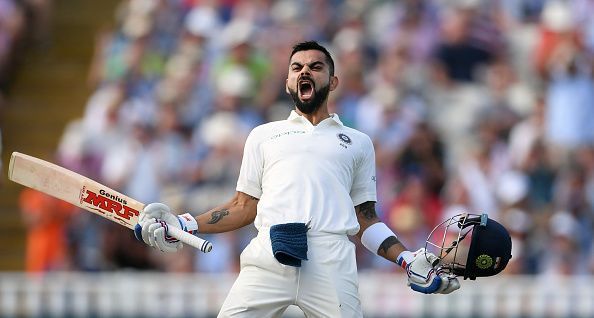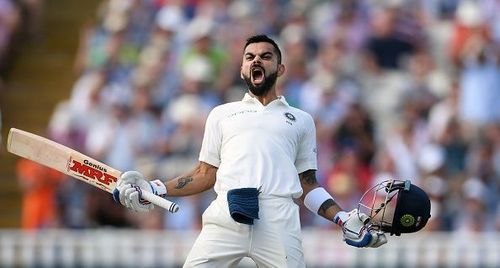
Analyzing the technical change by Virat Kohli in South Africa that led to the huge success in England

Virat Kohli is one of the best batsmen cricket has seen in this era, probably outside it too. The fact that he is the No. 1 batsman in both Tests and ODIs might even make him the best. But, there were questions that arise asking how a batsman who couldn't score runs in England can be considered the finest. The fact that Steve Smith has 3 centuries there with one at Lord's added weight to the argument.
But the doubts were quashed when the Indian skipper finished as the highest run scorer in the Test series during the England tour earlier. The technical and mindset change which made that possible can be traced all the way to the final Test early this year in South Africa.
Here's the analysis on the change of technique that enabled Kohli to turn things around.
Kohli's subtle change in Technique
The pitch for the 3rd Test for India's tour of South Africa, 2018 generated lots of criticism from Day 2 onwards. The challenges posed by the bowlers in such a bowling-friendly pitch prompted two of the best batsmen in the world to change things up in opposing styles. The more pronounced change in technique was from Hashim Amla, who moved way across the stumps at the time of delivery. But, the more interesting change was from Virat Kohli, who made an adjustment in the 2nd innings.
There was no noticeable change in the first innings, where he scored a 50 before getting out driving outside off. His back and across trigger movement has sometimes made him play at wider deliveries, with that dismissal being a case in point. The technique has brought Virat tons of runs, and even in that match he drove gloriously on Day 1 due to that, so no criticisms.
In the more challenging 2nd innings, he was still using the same trigger movement, but this time there was a difference. While there was no change in the backward movement, he had reduced the shuffle across the stumps to a minimum. This made sure he was more still at the time of delivery than before. Kohli was more compact and convincing in the second innings, not going for wide balls unless they were lose deliveries and generally playing straighter. On a wicket that was doing loads he looked flawless and his judgment outside off was impeccable.
The current ICC Cricketer of the Year scored an invaluable 41 before being bowled by Rabada. The excellent delivery clipped the off stump. Ironically, it would've been covered, at least partially by Virat's pads if he had used his usual trigger movement.
Every technical change, no matter how subtle comes with both positives and negatives. It's all about adapting to situations and conditions, something which Virat Kohli is a master in. A simple change of trigger movement to adjust to a particular pitch has helped him conquer the demons of the past.
That is why cricket is both complicated and straightforward at the same time, a paradox that makes this game even more beautiful.